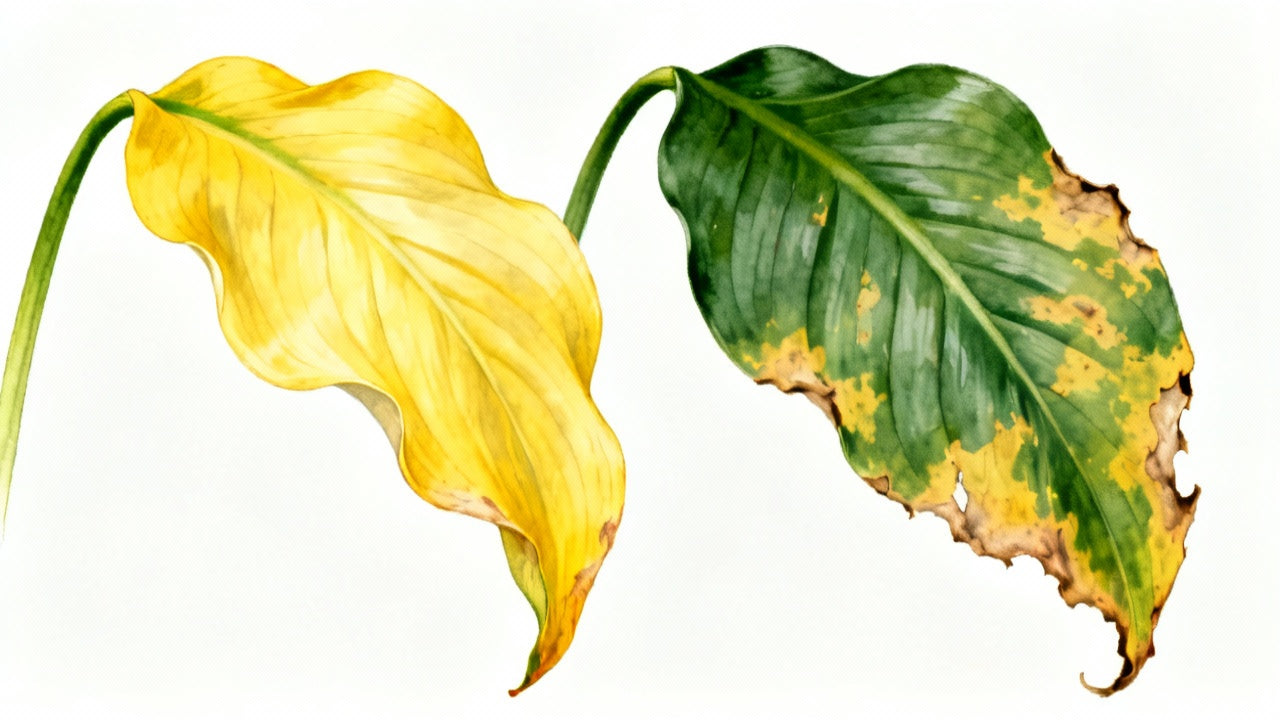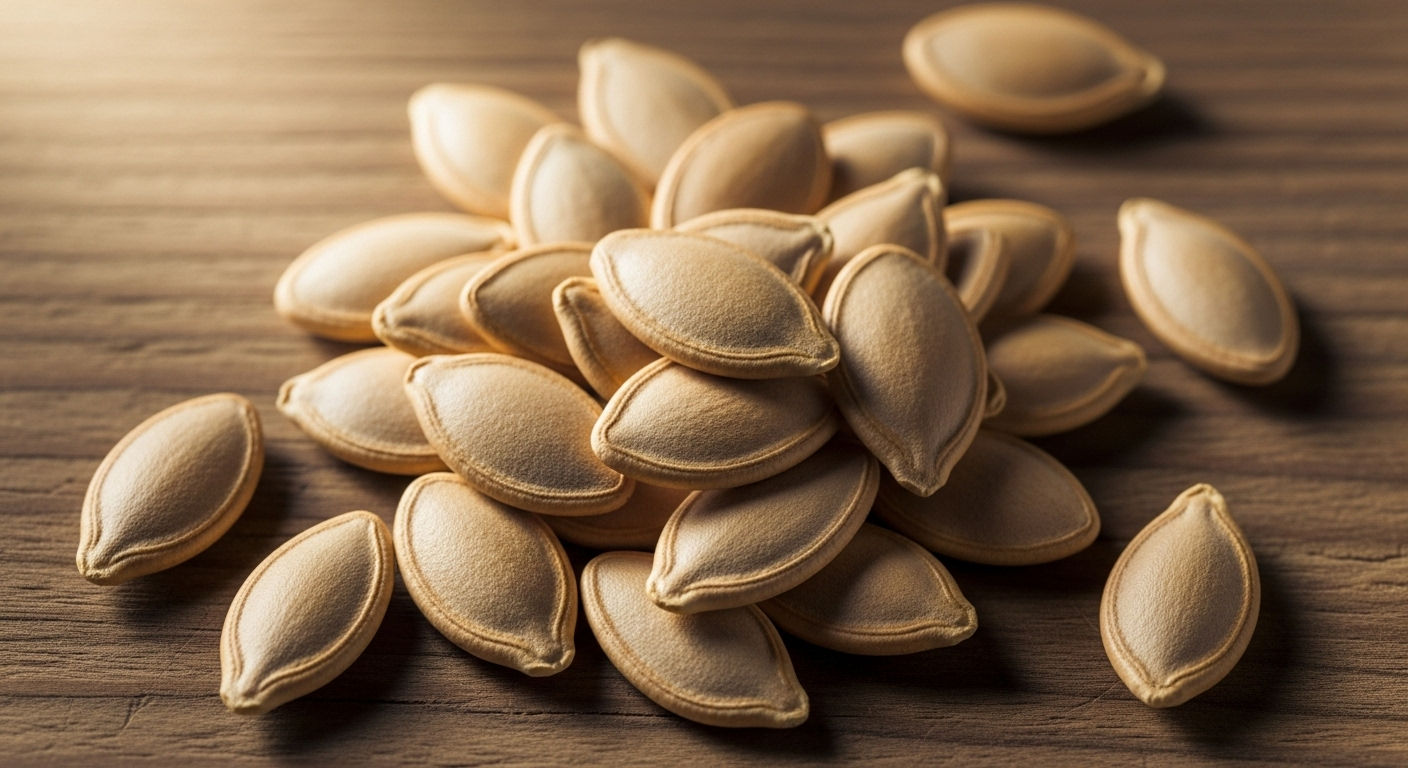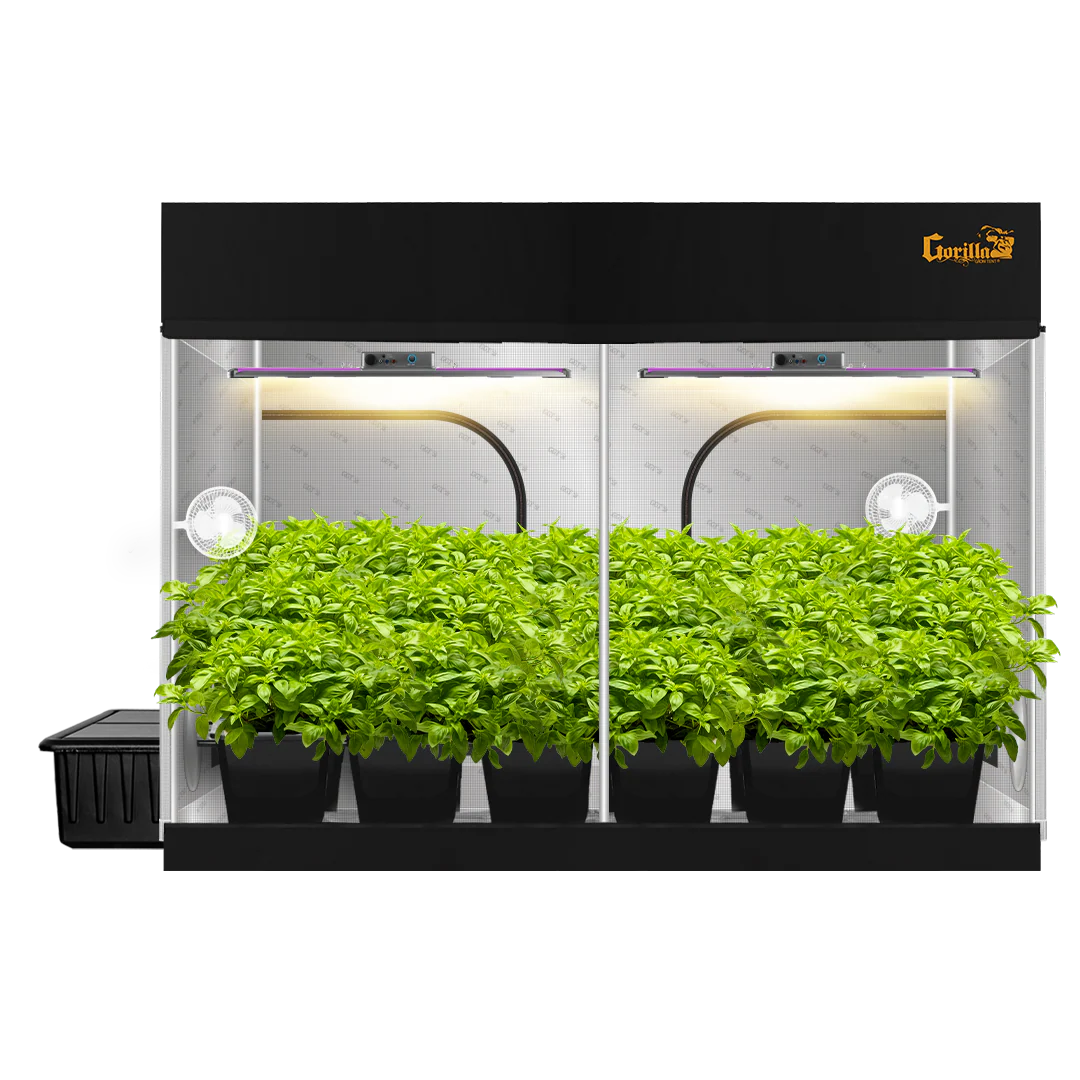
Why Are My Peace Lily Leaves Turning Yellow? Causes & Solutions
Peace lilies (Spathiphyllum) are beloved indoor plants known for their elegant white blooms and glossy green foliage. However, when those lush leaves begin turning yellow, it's a clear signal that your plant is experiencing stress. Understanding the causes of yellowing peace lily leaves is the first step to nursing your plant back to health. This comprehensive guide will help you identify the problem and implement effective solutions for vibrant, healthy growth.
Common Causes of Yellow Leaves on Peace Lilies
Peace lily yellow leaves can be triggered by several factors, ranging from basic care issues to environmental stressors. By systematically evaluating these potential causes, you can quickly diagnose and address the specific problem affecting your plant.
1. Improper Watering Practices
Water-related issues are the most common reason for yellowing peace lily leaves, with both overwatering and underwatering causing similar symptoms.
Overwatering
Peace lilies enjoy consistent moisture but hate soggy conditions. Overwatering leads to:
- Yellowing leaves that may also appear swollen or puffy
- Soft, mushy stems near the base
- Water-soaked spots on leaves
- Root rot (visible as brown, mushy roots if you inspect)
Solution: Allow the top inch of soil to dry out before watering again. Ensure your pot has adequate drainage holes and empty any water collection trays within 30 minutes after watering. If root rot has developed, you may need to repot the plant in fresh soil after trimming away damaged roots.
Underwatering
Peace lilies will dramatically wilt when thirsty, but consistent underwatering manifests as:
- Yellowing leaves, typically starting at the tips and edges
- Crispy, brown leaf margins
- Curling leaves
- Slow growth
Solution: Establish a regular watering schedule based on your home's conditions. Typically, watering once a week works well, but adjust according to temperature and humidity levels. When leaves begin to slightly droop, it's time to water.

2. Light Exposure Problems
Peace lilies thrive in medium to low indirect light, making them excellent houseplants. However, incorrect light exposure can cause leaf discoloration.
Too Much Direct Sunlight
When peace lilies receive excessive direct light:
- Leaves develop yellow patches or bleached areas
- Leaf edges may appear scorched or brown
- Foliage may be pale rather than deep green
Solution: Move your peace lily away from direct sunlight, especially south or west-facing windows. Place the plant in a location with bright indirect light or filtered light. For optimal growing conditions indoors, consider using a Gorilla Grow Tent Shorty with appropriate lighting to create the perfect environment for your peace lily and other shade-loving plants.
Insufficient Light
While peace lilies tolerate low light, too little light causes:
- Overall pale, yellow-green foliage
- Leggy growth as the plant stretches toward light sources
- Reduced or absent flowering
Solution: Move your plant to a brighter location with indirect light, such as near a north-facing window or a few feet away from an east-facing window. If natural light is limited, supplement with gentle grow lights specifically designed for indoor plants.
3. Nutrient Deficiencies or Imbalances
After ruling out watering and light issues, consider nutrient factors that may be affecting your peace lily.
Nitrogen Deficiency
Nitrogen is essential for leaf development, and its deficiency shows as:
- Older, lower leaves turning yellow first
- Gradual yellowing that progresses up the plant
- Stunted growth
Solution: Apply a balanced, water-soluble houseplant fertilizer diluted to half the recommended strength every 6-8 weeks during the growing season (spring and summer). For indoor growing setups, integrating a gentle fertilization regimen is essential, as discussed in our blog post on optimizing nutrients for indoor plants.
Over-fertilization
Too much fertilizer can burn roots and cause:
- Yellow leaves with brown, crispy edges
- White crust on soil surface
- Leaf tip burn
Solution: Flush the soil thoroughly by running water through it for several minutes, allowing it to drain completely. Reduce fertilizer frequency to once every 2-3 months, using a diluted solution.

Environmental Stressors Affecting Peace Lilies
Beyond the basic care issues, environmental factors can contribute to yellowing leaves in peace lilies.
1. Temperature Fluctuations
Peace lilies prefer stable temperatures between 65-85°F (18-29°C). They're particularly sensitive to:
- Cold drafts from doors, windows, or air conditioning
- Sudden temperature drops
- Exposure to temperatures below 55°F (13°C)
When exposed to unfavorable temperatures, peace lilies respond with:
- Yellowing leaves, often with a translucent appearance
- Black or dark brown spots if exposed to cold
- Overall decline in plant health
Solution: Keep your peace lily away from drafty areas, air conditioning vents, and cold windows. For optimal temperature control, especially during winter months, consider growing sensitive plants like peace lilies in a controlled environment like a Gorilla Grow Tent, which maintains ideal growing conditions year-round.
2. Water Quality Issues
Peace lilies can be sensitive to chemicals in tap water, particularly:
- Chlorine and chloramine
- Fluoride
- High mineral content (hard water)
These chemicals may cause:
- Yellow leaf edges and tips
- Brown, crispy leaf margins
- Overall yellowing over time
Solution: Use filtered water, rainwater, or allow tap water to sit out overnight before watering your peace lily. For serious water quality issues, consider a simple water filtration system for your houseplants.
3. Pest Infestations
While peace lilies are somewhat pest-resistant, they can occasionally suffer from:
- Spider mites (indicated by fine webbing and stippled leaves)
- Mealybugs (visible as white, cottony clusters)
- Scale insects (appearing as small brown bumps on stems and leaves)
Pest damage often appears as:
- Yellow spots or stippling on leaves
- Distorted new growth
- Sticky residue on leaves (honeydew)
Solution: Isolate infested plants immediately. Treat with insecticidal soap or neem oil, applying to all leaf surfaces according to package directions. For recurring issues, consider a preventative regimen, especially in indoor growing environments.

Restoring Your Peace Lily to Health
Once you've identified the cause of your peace lily's yellow leaves, follow these steps to rehabilitate your plant and prevent future issues.
Proper Pruning Techniques
Removing yellow leaves improves both plant health and appearance:
- Use clean, sharp scissors or pruning shears
- Cut the yellow leaf at the base where it meets the main stem
- Remove entire leaves rather than cutting off just the yellow portions
- Sanitize tools between plants to prevent disease spread
Repotting for Rejuvenation
Consider repotting your peace lily if:
- It's been more than 2 years since the last repot
- The plant is severely root-bound
- You suspect root rot or soil quality issues
When repotting:
- Choose a container 1-2 inches larger in diameter than the current pot
- Use fresh, well-draining potting mix formulated for houseplants
- Gently loosen the root ball and inspect for damaged roots
- Position the plant at the same depth it was growing previously
Establishing an Optimal Care Routine
Prevent future yellowing by creating a consistent care regimen:
- Water when the top inch of soil feels dry
- Maintain humidity levels around 50-60% (use a humidifier if needed)
- Fertilize lightly during the growing season
- Clean leaves occasionally to remove dust
- Monitor for early signs of problems
For those serious about indoor gardening, creating a dedicated growing space with controlled conditions using a Gorilla Grow Tent Kit provides peace lilies and other sensitive plants with the ideal growing environment year-round.
FAQ: Peace Lily Yellow Leaves
Are yellow leaves on peace lilies always a sign of a problem?
Not necessarily. It's normal for older leaves (especially those near the bottom of the plant) to eventually yellow and die as part of the natural aging process. However, if multiple leaves are yellowing simultaneously or if newer leaves are affected, this indicates a care issue that needs addressing.
Should I remove yellow leaves from my peace lily?
Yes, you should remove yellow leaves from your peace lily. Once a leaf has turned yellow, it won't turn green again, and the plant expends energy trying to sustain it. Using clean scissors or pruning shears, cut the yellow leaf at its base where it connects to the main stem. This improves the plant's appearance and allows it to direct resources to healthy growth.
How often should I water my peace lily to prevent yellow leaves?
Most peace lilies need watering once the top inch of soil feels dry to the touch, typically every 7-10 days depending on your home's conditions. Rather than following a strict schedule, learn to recognize when your plant needs water by watching for slight drooping of leaves, which is your peace lily's way of indicating thirst before more serious problems develop.
Can yellow leaves on my peace lily recover and turn green again?
Once a peace lily leaf has turned yellow, it will not revert to green. The yellowing process indicates the leaf cells are breaking down, and this change is irreversible. However, with proper care adjustments, your plant will produce new, healthy green leaves, eventually replacing the yellow ones you've removed.
Why does my peace lily have yellow leaves even though I'm watering it correctly?
If your watering routine is appropriate but leaves are still yellowing, consider other factors such as light exposure, temperature fluctuations, humidity levels, fertilizer issues, or water quality problems. Peace lilies are sensitive to chlorine and fluoride in tap water, so switching to filtered or distilled water might solve persistent yellowing issues even when all other care aspects are correct.
Featured Snippet Summary
Yellow leaves on peace lilies typically indicate improper watering, with overwatering causing uniformly yellow leaves and root rot, while underwatering creates yellow tips and edges. Other common causes include improper light exposure, temperature stress, nutrient imbalances, and water quality issues. Remove yellow leaves at the base, adjust care practices, and ensure appropriate light and consistent moisture for recovery.
Grow Healthier Peace Lilies with Gorilla Grow Tent
Ready to eliminate yellow leaves and grow the healthiest peace lilies possible? Creating an optimal growing environment is the key to success with these beautiful but sometimes finicky plants. Our Gorilla Grow Tent systems provide the perfect controlled environment for peace lilies and other houseplants, allowing you to manage light, humidity, temperature, and air circulation with precision.
Visit our website today to explore our complete selection of indoor growing equipment designed to help your houseplants thrive year-round, regardless of your home's conditions. With the right setup and care, you'll enjoy lush, green peace lilies with stunning white blooms for years to come!

Lena Myles
I'm a mushroom enthusiast and home cook based in Oregon. I'm passionate about foraging and creating fungi-focused recipes, especially delicious, plant-based dishes using gourmet mushrooms like trumpet, shiitake, and oyster. When I’m not in the kitchen, you’ll usually find me wandering the woods in search of new wild flavors.


